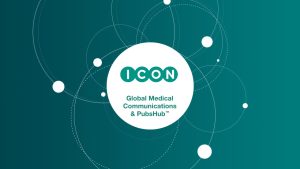By Eva-Maria Strobel, Partner at Baker McKenzie
The trademark landscape is evolving rapidly, with both brand owners and trademark professionals trying to keep up. The changes are mostly driven by the steep rise in trademark applications — there was a 13.7% increase in trademark filing activity in 2015, according to WIPO — and shrinking budgets as all involved are tasked with doing more with the same or fewer resources.
These issues present challenges to those responsible for ensuring that potential future marks are fully cleared prior to application and current marks are properly watched after registration. While considering lower cost alternatives certainly can be attractive, as discussed below, there is a great deal of risk if you cut corners. A trademark professional should always properly clear a mark prior to registration and protect marks after application.
Increasingly trademark lawyers and professionals are seeking new ways to deliver value to our clients — whether that is combining and making better use of the tools available for search and clearance, or reinforcing the importance of expert analysis and advice in the process.
Trademark professionals and brands alike need to be consistent in the way they approach search and make use of the same practices they have used in the past to avoid risk, while considering challenges they face and the way that the trademark landscape is evolving.
The importance of Search, Clearance and Watch
Increasingly what we are seeing as trademark lawyers is that due to budgetary constraints, clients are relying on Google, EUIPO or USPTO when searching and clearing a trademark. There are inherent dangers here in that these online resources do not cover all areas of search, lack the reporting capabilities of paid-for tools, and do not include the analysis and expert advice offered by trademark professionals.
Practically speaking, brands simply cannot afford to clear every single mark. One of the examples of this that I have encountered centres on a well-known consumer goods manufacturer that relies on a large in-house team of IP lawyers for search and clearance. With a wide range of products, the marketing department began moving away from more technical names in order to make them more appealing to customers. Due to the number of products the company produced, it was not practical or cost-effective to clear each mark. These marks were seen as temporary and were never meant to be developed as stand-alone brand names. However, with so many moving parts in the trademark management process, the marketing department continued to use some of these names and use them more prominently than initially envisioned.
The danger here is that once these uncleared marks are used more visibly in promotional campaigns, packaging and on websites, or even on the goods themselves, there is an increased likelihood that a competitor who owns a prior mark will become aware of such use, leading to disruptive disputes, costly settlements or – in the worst case - retracting products from the market.
While brands cannot clear all marks, in the above example hundreds of names for individual products, they need to work with trademark professionals to find a balance between using the mark and the risk involved. These companies need to make use of fundamental clearance procedures and have an understanding around what is actually possible in the longer term to mitigate the legal risk if these marks are still necessary. Whether that is using customised search to look for specific terms (such as slogans) or descriptive terms; or broadening the scope of what is cleared.
This also applies to marks on watch — what we see is that many clients only watch their primary marks or those in certain regions, ignoring the global picture or lesser, seasonal marks.
While there are challenges when it comes to budget, the importance of searching, clearing and watching properly, making use of both the right technology and professional expertise is clear in the numerous examples of companies that have gotten it wrong and paid the price.
When Trademarking Goes Wrong
Consider the case of Chernae Noonan versus Benefit Cosmetics LLC in Australia. Benefit Cosmetics, a subsidiary of Louis Vuitton Moet Hennessy, had been using the trademark “Brow Bar” in the US since 2003. In 2008, the company applied to register the mark in Australia. Australian business owner Chernae Noonan, who had registered “The Brow Bar” in 2005 for her chain of beauty salons, opposed the registration on the grounds that it was likely to cause confusion with her established brand. The Australian Trade Marks Office upheld Noonan’s opposition, denying the registration. Further, Benefit Cosmetics was forced to pay costs.
In another example going back a few years, perfume maker Guerlain SA of France opposed an application by Italian cruise line Costa Crociere for the trademark “Samsara” in class 44 for “Spas, Turkish baths, sauna services, health spa services, all provided on board cruise ships” on the basis of its prior Community Trademark “Samsara” in class 3 for the products “Soaps, perfumery, essential oils, cosmetics, hair lotions, dentifrices.” The then named Office for Harmonisation in the Internal Market (OHIM) — now the EUIPO — upheld the opposition. The applicant appealed to the General Court of the European Union. The General Court upheld the OHIM decision, citing the similarity of the marks and the likelihood of confusion given the similarity of services in class 44 and products in class 3. Did Costa Crociere fully clear the mark SAMSARA, or did they limit clearance to Class 44 services only, disregarding the risk that there may be similarity between such services and Class 3 goods and eventually likelihood of confusion?
What these cases demonstrate is that before establishing a new brand, or entering new markets with existing brands, it is wise to perform a full availability search in the targeted jurisdiction(s) covering the right Classes to identify potential conflicts early – and when we are talking about the targeted jurisdictions, the recommendation is not to focus on the key markets only but to at least conduct an identity search with a broad geographic coverage (keeping in mind that there may, for instance, be a recently filed registration or pending application in a not-targeted jurisdiction, and the right holder may decide to expand its geographical scope of protection within the 6-months priority deadline into the targeted jurisdictions). Failing to do this can lead to costly legal proceedings, inability to use your brand in key markets, and negative publicity that could damage your brand image.
The Value of Expertise
There is more to the trademark management process than search and clearance. In the same way, there is more to the process than just the tools or technologies that are used. As mentioned before, the expertise and advice that trademark professionals, such as lawyers, can offer, brings immeasurable benefit to the client. This is particularly true when it comes to reviewing search and watch results. While the results generated are important to the process, so too is the analysis and interpretation by trademark professionals — be wary of solutions that remove the review stage because it exposes clients to risk and doesn’t provide the full picture. Of course, as a trademark lawyer I rely on having the right tools on hand, and the right vendor to supply those. The support and service from these vendors, that match the hours I tend to work, is invaluable.
In my experience, clients do have budgetary issues and other challenges. But more and more they are turning to us for commercial and practical considerations alongside legal advice, all things we are able to deliver because of our depth of expertise in this area and the data we have access to.
Yes, there may be competing marks, but the value of our advice comes in the form where we can analyse what the likelihood of litigation may be; is the mark being used? How is the mark being used? Is it used often or randomly, or not for years? Does the mark’s owner aggressively enforce its trademark rights? And it is here that we can advise if the risks are manageable or too high to be considered.
There are many strategies that can be used when considering a conflict, but these are not always used if legal counsel is bypassed or brands make use of low-cost services.
The number of trademark applications is rising exponentially, making the landscape that much more difficult to manage. The fact is that due to these numbers, finding a unique mark is near impossible. However, with the right tools, analysis and expertise delivered by trademark professionals, IP lawyers and in-house counsel, conflicts can be managed and the entire trademark management process can be done more effectively and efficiently.
Eva-Maria Strobel is a partner in Baker McKenzie's European Intellectual Property Practice Group. Managing IP and WTR 1000 rank Eva-Maria Strobel as one of the leading trademark lawyers in Switzerland. Eva-Maria is admitted to the bars in Switzerland and Germany, and worked in the Firm’s Frankfurt office prior to relocating to Zurich.




















